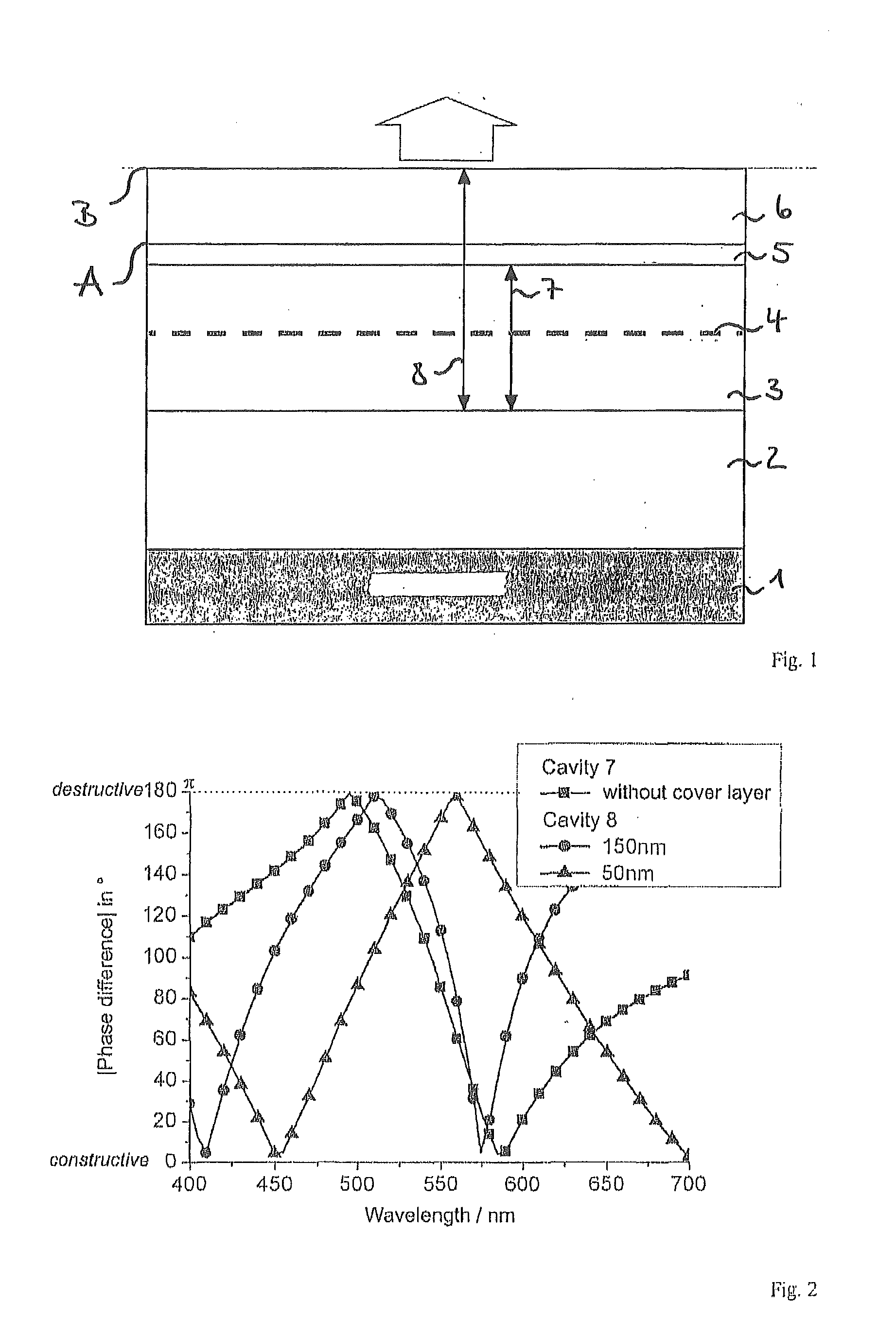Organic component vertically emitting white light
a technology of organic components and white light, applied in the direction of organic semiconductor devices, thermoelectric devices, solid-state devices, etc., can solve the problems of reducing the intensity of emitted light at bigger viewing angles, affecting the emission spectrum in return, and the angle dependence of emission spectrum in return is worsened, so as to achieve the effect of improving the emission of white ligh
- Summary
- Abstract
- Description
- Claims
- Application Information
AI Technical Summary
Benefits of technology
Problems solved by technology
Method used
Image
Examples
Embodiment Construction
[0021]In the following, the invention is explained in more detail using exemplary embodiments with reference to figures of a drawing. They show:
[0022]FIG. 1 a schematic illustration of a construction of an organic component emitting white light upward,
[0023]FIG. 2 a graphic representation of the phase difference as a function of the wavelength for a first and a second optical microcavity,
[0024]FIG. 3 a graphic representation of the relative emission as a function of the wavelength at different viewing angles for an organic component emitting white light without a cover layer,
[0025]FIG. 4 a graphic representation of the relative emission as a function of the wavelength at different viewing angles for an organic component emitting white light with a cover layer having a thickness of 150 nm,
[0026]FIG. 5 a graphic representation of the relative emission as a function of the wavelength at different viewing angles for an organic component emitting white light with a cover layer having a t...
PUM
 Login to view more
Login to view more Abstract
Description
Claims
Application Information
 Login to view more
Login to view more - R&D Engineer
- R&D Manager
- IP Professional
- Industry Leading Data Capabilities
- Powerful AI technology
- Patent DNA Extraction
Browse by: Latest US Patents, China's latest patents, Technical Efficacy Thesaurus, Application Domain, Technology Topic.
© 2024 PatSnap. All rights reserved.Legal|Privacy policy|Modern Slavery Act Transparency Statement|Sitemap



